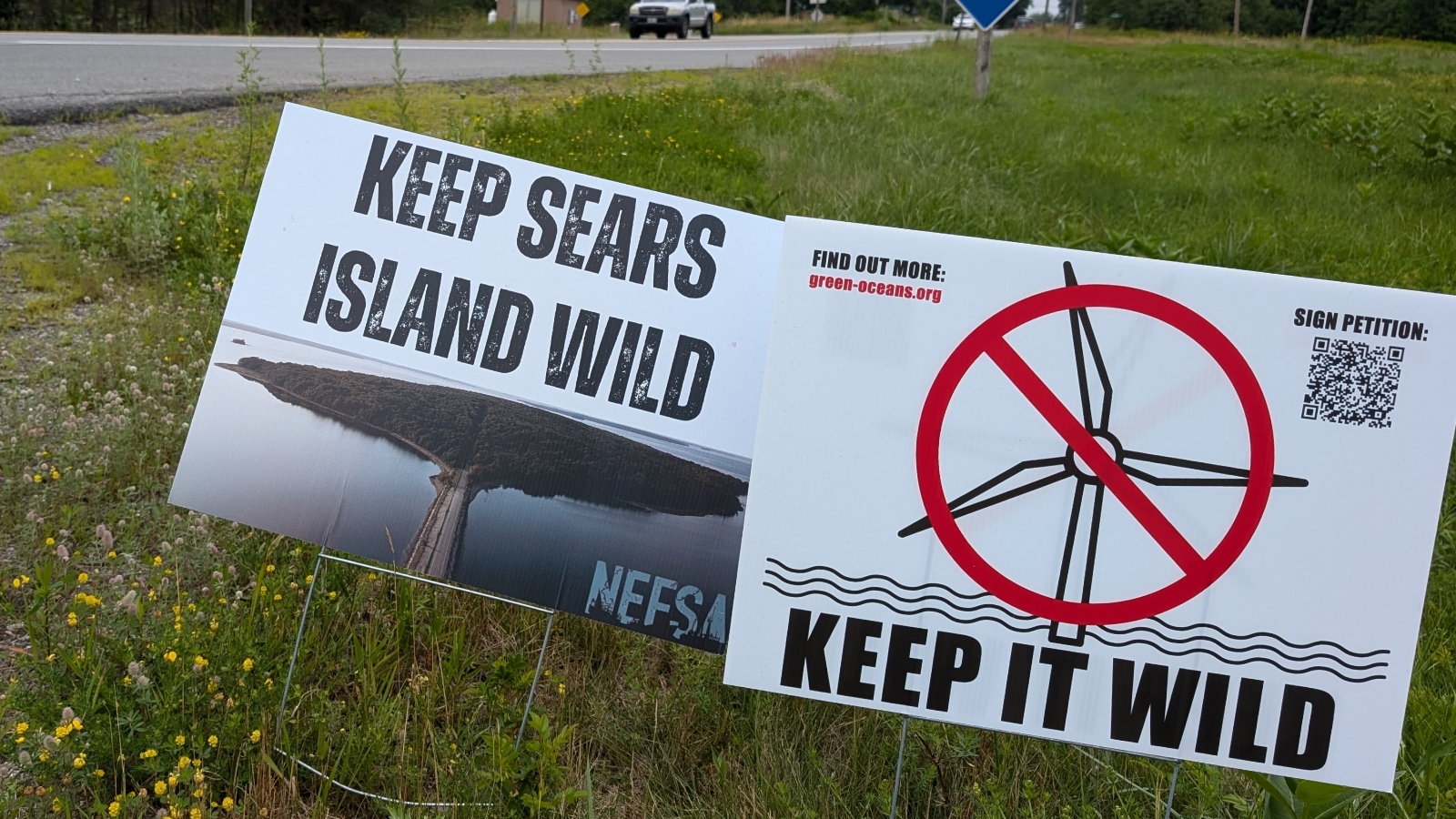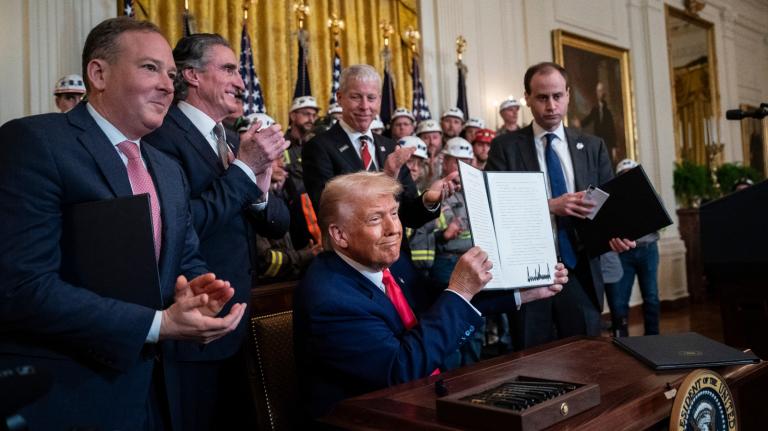Ron Huber rifled through a thick folder full of decades of state environmental records outside a community hall in the tiny coastal Maine town of Searsport. For the longtime local conservation activist, the scene inside was a familiar one: Dozens of neighbors, workers, and environmentalists mingled over pizza and coffee, discussing the merits of a proposed industrial project that has potential to transform the local economy, but at the expense of a locally beloved natural area.
“We’ve seen these things rise and fall many times,” Huber said outside the event late this past spring. Conservationists have celebrated over the decades as plans for a coal plant and a liquefied natural gas terminal on Sears Island came and went without success.
This latest proposal presents a new kind of conflict. Rather than pitting townspeople against a corporate polluter, this development would support clean energy and be integral to the state’s plan for cutting climate emissions.
In May, the state applied for a $456 million federal grant to build a specially designed port on about 100 acres of Sears Island to support Maine’s nascent floating offshore wind industry. About two-thirds of the 941-acre island is in permanent conservation, and the state retains an easement on the rest, which has been reserved for a potential port for years.
“We’re not optimistic that this one’s going to die under its own weight,” Huber said, noting that the offshore wind port has far more popular support than previous development proposals.
Visits to recent community events like this one show that, unlike the polarized fights over clean energy projects in other parts of the country, Maine’s wind port is creating more personal divides — challenging residents’ values around climate change, conservation, and economic factors. It previews what could be coming as wind grows in the Northeast.
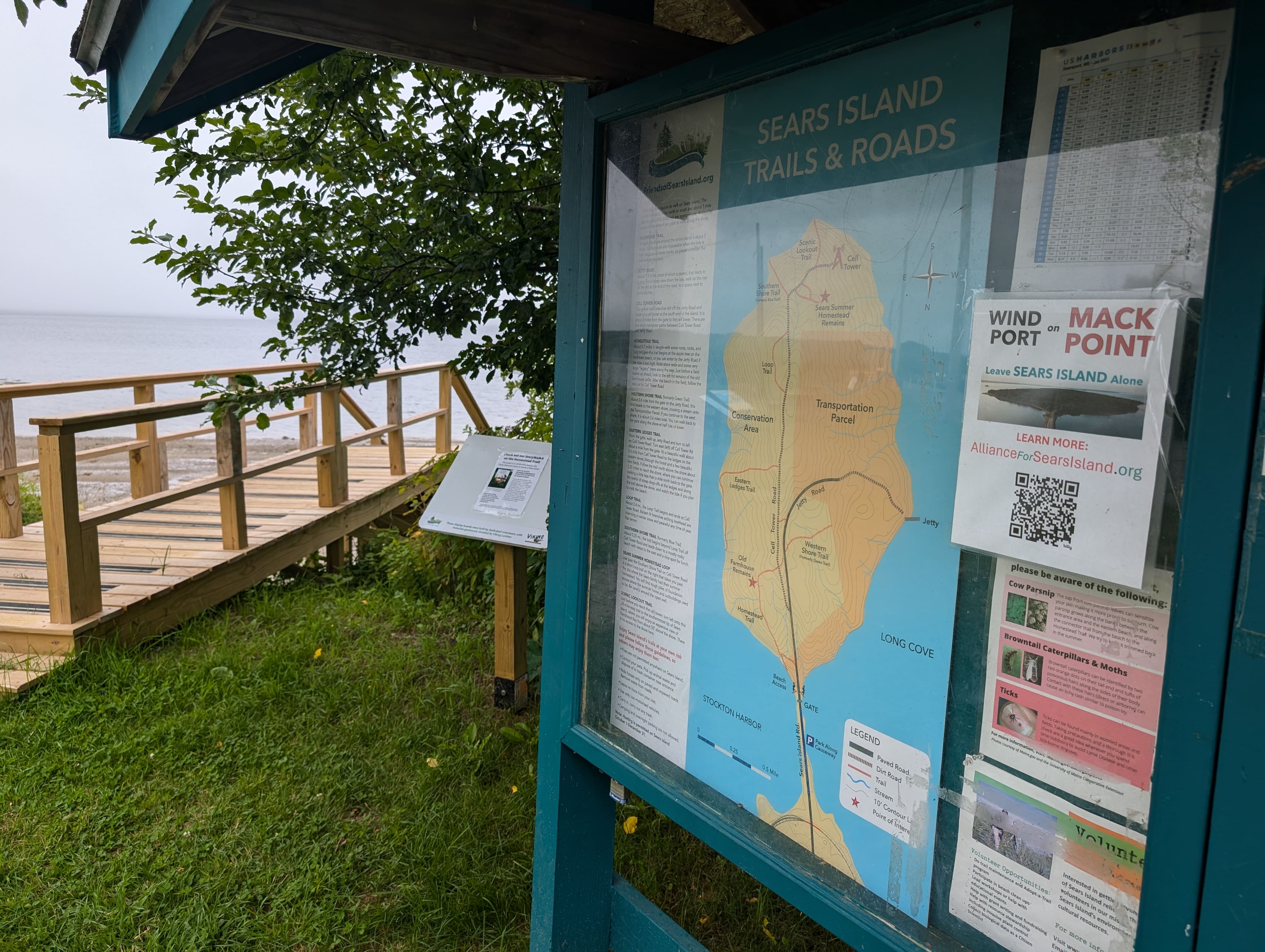
“My question is really about why we’re not actually all on the same team,” said Belfast, Maine, resident Julianne Dow inside the community hall, during a Q&A period with New England labor organizers. “I’m very pro-union, I’m pro-offshore wind, and pro having it here, and for the economic benefits for the region. But I’m also very pro maintaining Sears Island as a precious Midcoast resource.”
Dow and activists like Huber want the port built instead at a Sprague Energy-owned oil and logistics terminal across the water known as Mack Point. It was considered as an alternative in lengthy public processes in recent years, and Sprague and opponents of the Sears Island proposal have continued to urge reconsideration for it so far this summer.
Offshore wind has taken some big steps forward in Maine this year. Federal regulators approved a state research array of floating turbines, which generate power in deep waters far offshore, and are nearing leasing for commercial projects. A new state law calls for Maine to procure 3 gigawatts of offshore wind by 2040, using union-standard labor to build the projects and a floating wind-focused port.
Formal environmental assessments and site analyses are still pending. But state port authority director Matthew Burns wrote in June that Mack Point’s “physical and logistical constraints, need for significant dredging, and increased costs to taxpayers for land leasing and port construction would result in an expensive and inferior port for Maine compared to a versatile, purpose-built port on Sears Island.”
Still, opponents worry that wetlands and forests on Sears Island could be disrupted by port construction, even if most of the surrounding ecosystem remains intact.
“Because we have to sacrifice something, let’s sacrifice something irreplaceable, instead of cleaning up a dirty old existing port?” Huber said outside the event. “That’s just ridiculous.”
Asked if he saw wind as a climate solution more broadly, Huber began to express doubts about how turbine arrays would affect the ocean ecosystem. Fellow opponent Lou MacGregor of Belfast cut in.
“Right now, what we’re focusing on is protecting Sears Island,” MacGregor said. “We can get to whether we support offshore wind or not after we protect Sears Island.”
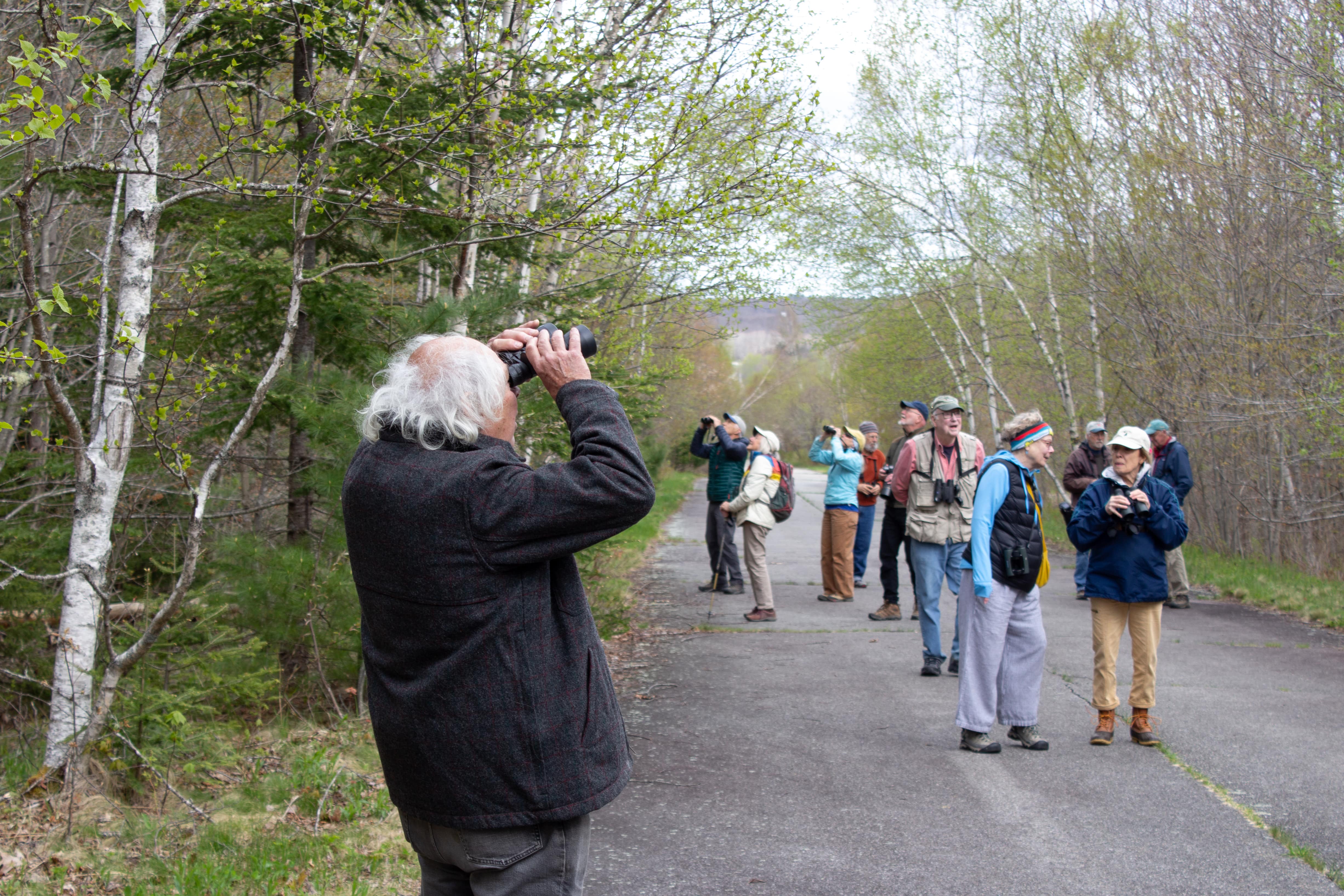
Scott Cuddy, who until recently was the executive director of the Maine Labor Climate Council, emphasized at the recent event that his group is agnostic about the port’s location, focusing instead on the benefits it could bring. Under Maine’s wind procurement law, he said, the port’s labor standards will be the same wherever it ends up.
“We desperately want to see this happen, because we need to fight climate change, and we need to do it with good jobs,” Cuddy said.
Cuddy and other labor organizers said state studies indicate that the port project and new wind farms could bring thousands of jobs to coastal Maine towns like Searsport. Local leaders said it could be a boost for shrinking school populations, attracting families to stay in the town long term.
“I think there’s been a mindset for a long time among kids, especially in rural Maine, like this was the thing I always heard: ‘You got to leave the state if you want to get a good job,'” said Sam Boss, the director of apprenticeships, workforce, and equity for the Maine AFL-CIO. “We’ve got to find ways to keep our people here. And if there’s good opportunities, people will stay for them.”
Boss, Cuddy, and others answered locals’ questions about plans for training programs for young people to enter the trades, and the family-sustaining wages and benefits promised by the growing wind industry — both in short-term construction positions and into the future.
“These are the skills that pay the bills, and they’re skills that don’t go away. The work might change — you know, we went from nuclear power plants, to now we’re doing offshore wind power development. But the skills are transferable,” said Nicki Kent, a union electrician who came to talk about her experience working on offshore wind in Rhode Island. “We’ve just got to get screwdrivers and wrenches into kids’ hands.”
Belfast resident Daniel Cowan was taking diligent notes on the back of an envelope while his teenage sons listened from the audience. A Navy veteran now pursuing a degree through the GI Bill, Cowan said he was curious about the possibility of wind industry jobs that could help him and his kids stay in Maine.
Cowan empathized with attendees who were opposed to building the port on Sears Island, but said he thought the project’s benefits sounded like they would outweigh the costs.
“You’re going to destroy something no matter what you do. I love Sears Island, I think it’s great, I love walking my dogs out there. But I don’t think that’s going to change,” he said. “The world is coming to an end one way or another, and how fast we get there makes a difference.”
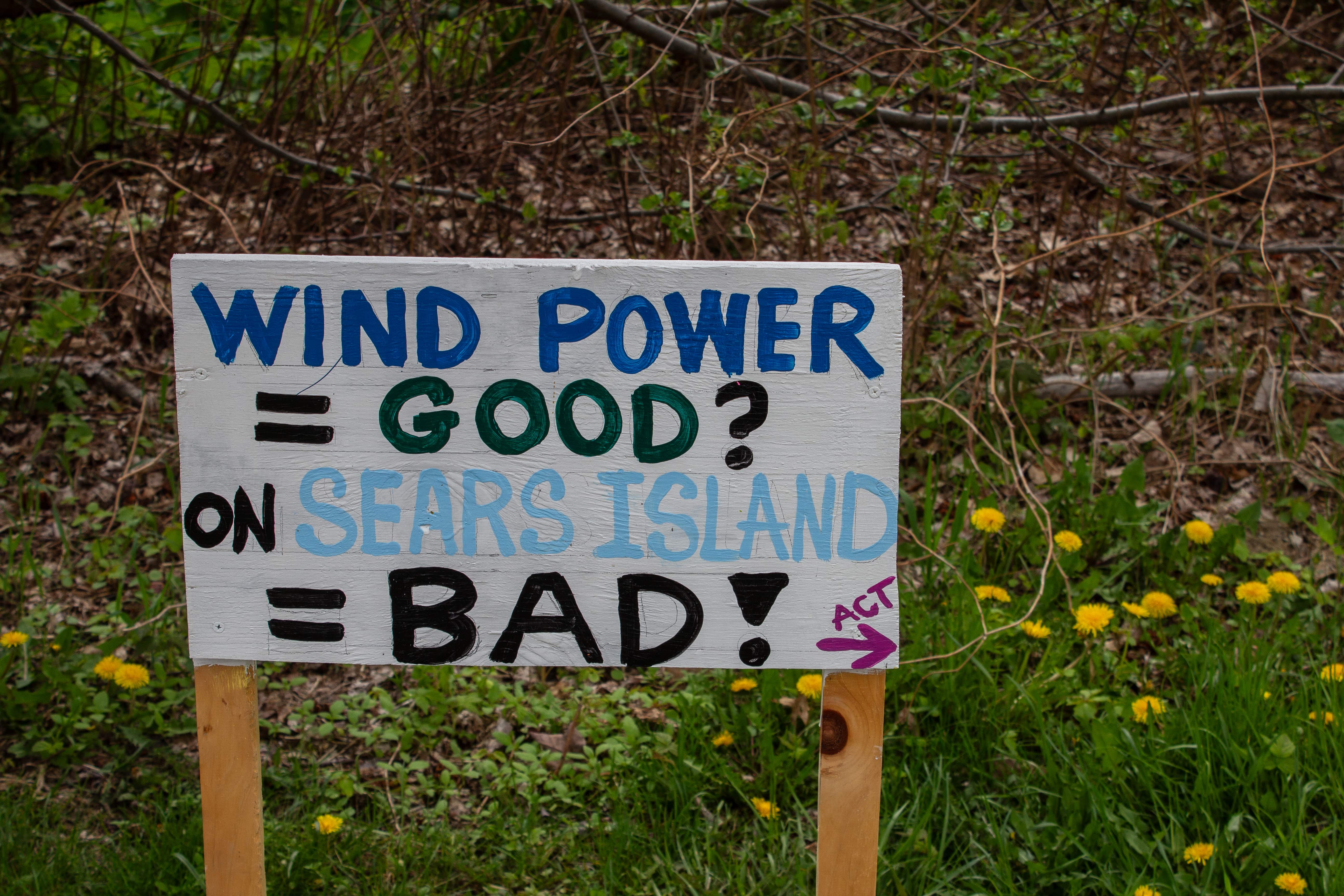
The island itself is connected to the mainland by a long causeway, bisected at its start by rail lines that snake around the coastline toward nearby Mack Point. The causeway juts out into Penobscot Bay, and Sears Island opens up at its end, an oval of land covered in trees and flanked by sandy, seaweedy shores.
On a Saturday morning not long before the Searsport labor dinner, a large group of birders gathered at the gate where the causeway’s pavement continues into the forest. They had come to scout for the tiny, colorful songbirds that rest on the island each year amid long migrations between Canada and the tropics.
Near the edge of the woods, someone had spray-painted the asphalt road with “Wassumkeag,” the Indigenous Wabanaki name for the island. Hand-lettered signs with the web address for the advocacy group Alliance for Sears Island read, “Wind power = Good? On Sears Island = Bad!”
The state does not plan to site wind turbines on Sears Island itself. Workers at the proposed port would help build and assemble towers and blades in pieces, towing them far out to sea for final assembly.
Still, anti-wind groups have seized on the proposed project. Lobstermen affiliated with the New England Fishermen’s Stewardship Association, or NEFSA, a Maine-based advocacy group founded in 2023 that focuses partly on opposing offshore wind, spoke out against the port at the recent jobs event.
“My concern is only that in trying to affect climate change, that we’re going to cause more damage to the environment than climate change is already causing,” said NEFSA officer Dustin Delano, a commercial fisherman from Friendship, Maine.
NEFSA has since posted signs where the island causeway intersects with the heavily trafficked Route 1 that read, “Keep Sears Island wild.” Similar signs showing a crossed-out wind turbine bore the name of Rhode Island-based Green Oceans. Since its founding in 2022, it has focused mostly on opposing Revolution Wind, currently under construction in waters between Rhode Island and Connecticut.
Many who joined the recent birding trip seemed unaware that Maine’s plans for Sears Island did not involve actually erecting turbines there or close to shore. Others expressed doubts about wind generally. Some did not want to discuss the issue at all, focusing instead on peering through binoculars at the Northern parula, black-throated green warbler, or hermit thrush chirping in the trees along the road.
A few people mentioned concerns that wind projects could harm whales. Scientists have found no evidence to support this claim, which has been linked to fossil fuel-funded disinformation campaigns. Green Oceans’ campaigns in Rhode Island have mimicked the delay and disinformation strategies of climate denialist groups like the Texas Public Policy Foundation, according to Brown University research.
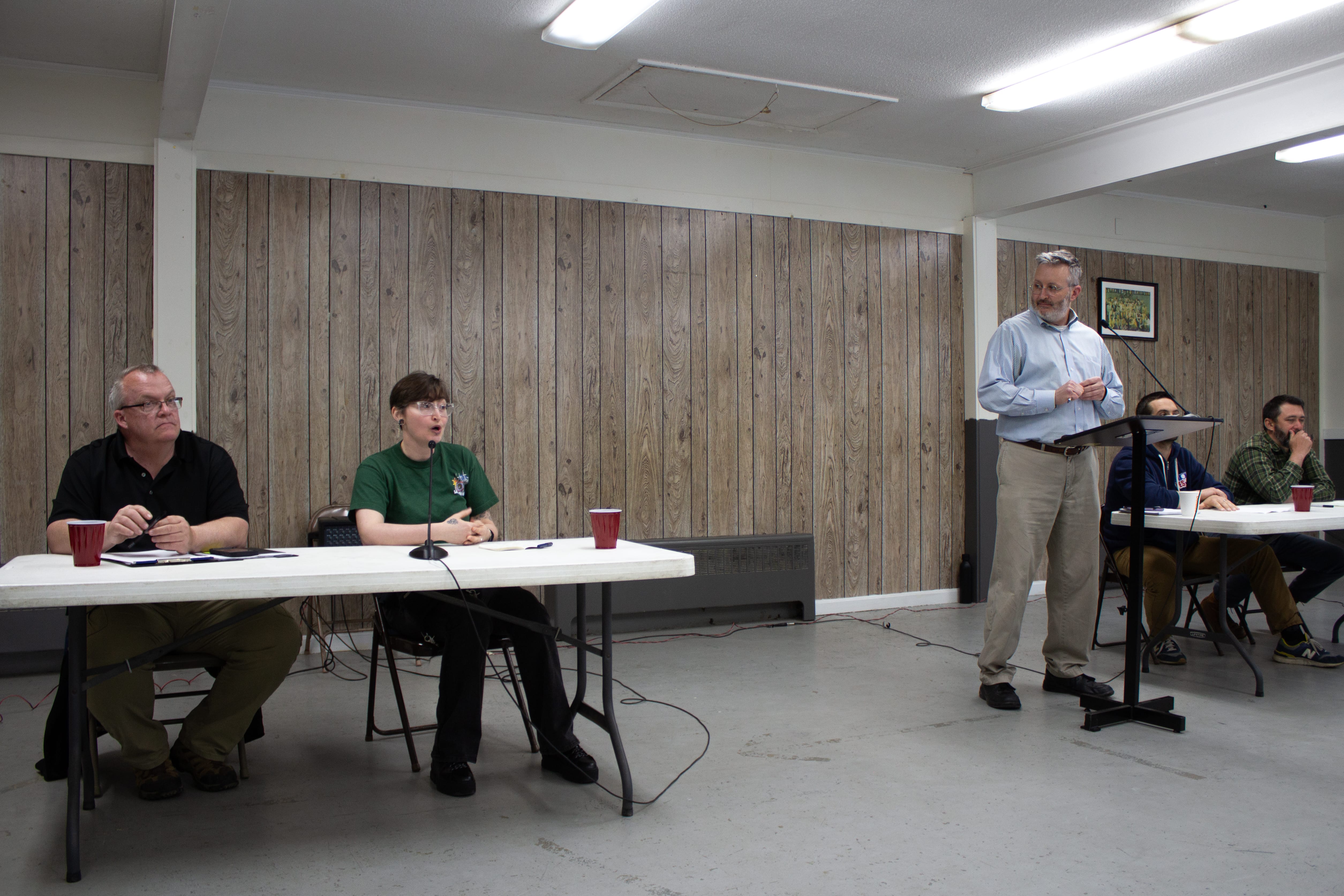
The threat of climate change to ecosystems like Sears Island’s, meanwhile, is very real. The Gulf of Maine is one of the fastest-warming water bodies in the world, swelling sea levels, threatening the lobster fishery and leading to more frequent, destructive storms. Maine saw a state-record four federal disaster declarations in 2023 and has received two more already this year.
The warming trend may affect the migratory birds that draw crowds to Sears Island each year. Warming temperatures are reshaping the length and timing of Maine’s seasons, which, combined with declines in insect populations driven by agriculture and other factors, could threaten the birds’ success, studies show.
“If you look at decades and decades of patterns, you’ll see that birds are arriving one to two weeks earlier,” said William Broussard, a Midcoast Audubon board member who led the recent Sears Island trip. “If they get here early, they might not have the insects that they depend on to be out, because maybe the trees aren’t leafing out … and that can be really tough.”
Midcoast Audubon hasn’t taken a position on the wind port issue. It’s a chapter of Maine Audubon, which separately supports the project but is not advocating for one site over the other. Maine Audubon is likewise independent from the National Audubon Society, which advocates for “responsibly sited renewable energy,” including wind, as a climate solution.

Marge Stickler, a birder from Belfast, said she wished the port would be built at Mack Point instead. “I have mixed feelings about what they’re doing here,” she said. “I love coming here … It’s a special place.”
She had read an opinion piece earlier this year by activist Bill McKibben, founder of the climate groups 350.org and Third Act, that urged Mainers to support the wind port even on Sears Island. McKibben wrote for Mother Jones last year that solving climate change will require a new “yes in my backyard” mindset.
“McKibben wrote that you have to look at the climate as a whole, and this may be a good thing to have here,” Stickler said. “I’m not sure — why did he write that for Maine, he lives in Vermont — but … he said it’s better to have it and it’s better to have it here, maybe.”
Dave Andrews, a retired engineer from South Bristol, Maine, struck a different tone as he trailed after the other birders. He’d worked on Superfund cleanups and brownfield solar projects in his career, and said he’d often heard “not in my backyard” sentiments from neighbors who were worried about viewshed impacts or a change in a place’s character.
“If it’s a Walmart shopping center, I guess you have a valid statement,” he said. “But when it comes to something like this, this is a different balance.”
Andrews called the port’s siting a “terrible dilemma.” But he felt swayed by the urgency of climate change and the fact that the project would leave much of Sears Island intact. As permitting and siting progress in the coming months, he said he hoped others who love the island would be able to accept the sacrifice.
“I don’t think there is a choice,” he said.
This story was updated to clarify Maine Audobon’s position on the project, and corrected Scott Cuddy’s role.

